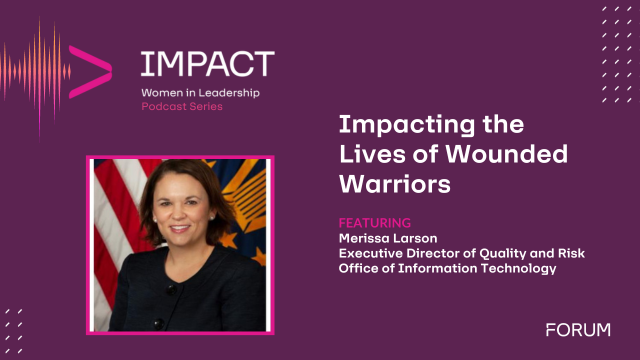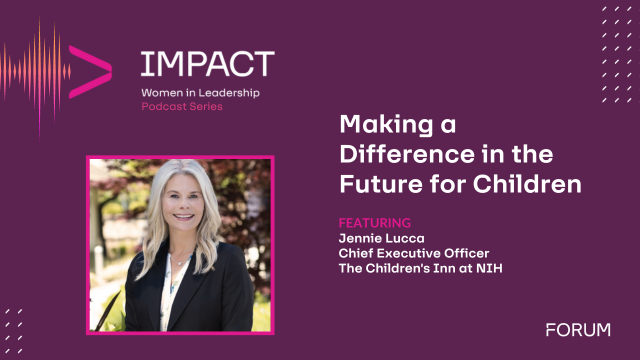In this month’s article, Mike Farahbakhshian gives thanks for staying alive another year, and dwells on what Health IT is doing to help limit morbidity and mortality (M&M). Black Friday has never been more apropos. Time to read: 9 minutes. Suggested drink pairing: hot toddies.
¡Día de los Muertos!
Hello, Meaningless Useketeers! We have entered my favorite time of the year, the holiday season. Finally, we can retire our manufactured autumn tradition of pumpkin spicing ALL THE THINGS and can enjoy an eggnog, hot toddy (or peppermint hot chocolate, if you’re into that sort of thing).
As we bid fall adieu, I do want to point out that one of my favorite holidays is often overlooked: The Mexican Day of the Dead.
Not that Day of the Dead.
My stepmother is from Mexico, so I have enjoyed this holiday for many years. No, it’s not Halloween! While there are a skeletons and candy, the Day of the Dead has a positive attitude towards death as a natural part of life. Departed ancestors and loved ones are venerated, not mourned, with bright colors, festive costumes, and – yes – delicious candy. Plus, the cultural underpinnings of the Day of the Dead are METAL AF:
Mictecaihuatl is the perfect name for a death metal mariachi band. Metalachi, change your name.
I like kicking off the holiday season with the Day of the Dead because the holiday season is freakin’ dangerous. Death rates rise at Thanksgiving. Part of this is because of natural reasons: Cold weather, increased prevalence of the flu… Part of this is from preventable reasons, namely traffic accidents and coronary events. After all, driving through insane traffic in terrible weather to argue politics with your family is a strain on your tires and your heart.
Advances in Health IT won’t make your awkward conversations with your father-in-law about the Clinton Kill List and the New World Order any easier. (Although, knowing that Christmas is the deadliest day of the year, you can troll him by saying there is casus belli for the “War on Christmas.”) Yet can advances in Health IT reduce morbidity and mortality rates? If so, how and how much?
Death and Taxes, and Fighting Death with Taxes
The Federal Health community has many reasons to track and minimize rates of morbidity (disease, disability, or poor health) and mortality (death). These include:
- Basic recordkeeping
- Public health/limiting epidemics
- Force readiness for military, industry, etc.
- Regulation and oversight of the insurance industry, which affects costs of many industries including banking, real estate, transportation, etc…and more
However, the Federal Health IT community has a nasty tendency to provide overengineered, costly solutions. It’s tempting to use technology, especially advanced ones like IoT or AI, to minimize disease and death. Sometimes, it goes too far. (Since death is on my mind, I think like an actuary.)
For example, let’s talk about preventable traffic deaths, a major cause of the holiday death spike. The Arizona Department of Transportation (ADOT) won a 2018 GCN Public Sector Innovation award for a Wrong Way Driver Detection System. This system uses a network of thermal detection cameras to spot drivers going the wrong way on the system. I’ve got nothing against using technology to stop wrong way driving, but did we need an IoT camera system? Let’s break it down.
First, it cost money just to have this idea. The Arizona Department of Transportation (ADOT) commissioned, using an unclear amount of public funds, a very thorough study on wrong-way driving. I’ve read it all. It’s a hoot. The paper concludes that impaired driving is the major factor in wrong way driving.
Second, the system is complex and has a lot of moving parts. It utilizes, and I quote, “the existing ADOT TOC, FMS fiber backbone, CCTV cameras, DMS, and ramp meters supplemented by new detection devices at highway exit ramps.” That sounds rather pricey to me. And it collects a whole lot of data that has to be stored and transmitted:
A chronology of every identified wrong-way event should be developed during the pilot deployment to: identify date, time, light conditions, weather, entry point activation location, mainline detection locations, direction, speed (if available), lane (if available) and manual observations of TOC operators and DPS officers during and after the event. This level of detail will assist in determining system weaknesses, if any, and will help set the stage for future system evolution.
Yikes. And this is with playing serious numbers games in the feasibility study. For example, the lifespan of the equipment was listed as twenty years before tech refresh. Twenty years. For integrated circuitry made cheaply in China. That will endure the temperature swings between sweltering Arizona daytime sun and chilly desert nights.
Riiiight.
Third, per the feasibility study itself, the best bang for buck efforts were all low-tech. Seriously. Low-mounted signs, better paint, and simple flashing lights. Do we really need thermal cameras and IoT reporting systems?
I’m not saying better paint and lights will save more lives. But better paint and lights will save the most lives for the least cost. Morbidity and mortality affect populations – taxpaying populations. Death and injury levy a cost upon society – insurance payouts, torts, lost work, property damage, and the cost of first responders. Countermeasures to morbidity and mortality have their own burden in the form of feasibility studies, development, testing, operations and maintenance, and technical refreshes. Federal Health IT and public health and safety officials must remember: Don’t make the cure more damaging than the disease.
Death Becomes HER… sorry, Death Becomes EHR: Health IT at Point of Care
So are there cost-effective ways to use Health IT to lower morbidity and mortality rates? For example, does the use of Electronic Health Records help? The answer is complicated. One study showed a small decrease in mortality rates and length of stay after ER visits. This decrease was accompanied by an increase in rehospitalization rates because the EHR was able to assist clinicians in spotting complications. From the full study:
Source: https://www.ncbi.nlm.nih.gov/pmc/articles/PMC3568047/pdf/1472-6963-13-39.pdf
But that’s just one study. Other studies show no measurable benefit. So what do we conclude? I’ll posit two conclusions. The first is that EHRs are a tool like anything else and that proper training is key. Anyone who is going through pre-med or med school needs required courses in data science and an overview of machine learning to understand where an EHR’s backend AI can flag issues and where they will generate no value.
The second conclusion is that academic publishing is broken. The “publish or perish” pararadigm means that studies are often thrown up with insufficient peer review. There is an overall reproducibility crisis. Publicly funded research is often thrown behind paywalls and beholden to corporate influence. The journals make up to 40 percent profit while limiting ability to peer review and research. I suggest anyone with an interest in making scientific research open and available look at Plan S. While not perfect, Plan S will increase the speed of technological and clinical innovation and improve outcomes.
She Sells Actuary: Health IT and Analytics
(Hat tip to The Cult.)
“Right back atcha.”
So, maybe point-of-care technology such as EHRs help, and maybe they don’t. What about analytical tools for population health?
The answer is equally murky. Many sources see the promise of using AI and analytics to reduce morbidity and mortality, but short on evidence. From the previous link (emphasis my own):
Future applications of real-time data, such as detecting infections as early as possible, identifying them swiftly and applying the right treatments (not just broad-spectrum antibiotics) could reduce patient morbidity and mortality and even prevent hospital outbreaks.
Most views of analytics view it from the angle of reducing costs rather than morbidity and mortality, although for certain known conditions, such as sepsis and congestive heart failure, there is evidence that analytics lead to early detection and lower death rates. The aforementioned sepsis study combined algorithms for detecting at-need patients with more effective antibiotic administration. This combination lowered death rates from 17 to 13 percent. Can we isolate the Health IT component from the antibiotics? No, but every little bit helps. And little bits are all we are getting, since most studies and presentations are, again, difficult to access and reproduce.
Since AI is great at doing risk and threat modeling, it is a great boon to actuarial science. There may be hope of improving outcomes this way: By modeling risky behavior, the insurance industry will adapt and provide incentives for providers and patients to behave more safely. Since risk modeling and shared risk are key to value-based care, I think that moving to value-based care and integrating AI into actuarial and population health analytics will ensure more people take care of themselves, and more providers pay attention to little problems before they become big.
Internet of Deadly Things
What about IoT and connected medical devices? We’ll get to that in a second, but I want to tell a story first about how I’m cursed with the touch of death.
I try not to name company names in my column because Health IT is about ideas more than companies. Yet a couple times I have had to call out companies by name: Cerner in Cernering the Market, and Medtronic in New Fiscal Year, New Fiscal You! As it so happens, every time I call out a specific company, a notable senior member of their management passes away sometime between proofing and publishing: CEO of Cerner in July 2017, and the founder of Medtronic in October 2018.
If I am to be cursed with the touch of death, I might as well monetize this. Let me know if you want me to write about any companies you may not like. I won’t name names, but maybe … Schmaccenture. Or Schmooz Allen. Or Schmognosante. Let me know your thoughts. I take Venmo and Ethereum.
I mention this story for two reasons. First, if the word “Schmognosante” doesn’t make you grin every time you say it aloud, forget about fighting mortality; you’re already dead inside. It’s an Intrinsically Fun Name. Second, it’s time to pick on Schmedtronic, and other implant manufacturers again. Will the streak be broken?
The promise of connected medical devices is amazing. The actual effect on morbidity and mortality is not. The number of reported problems and complications with medical implants is soaring. In 2017, one in five reported problems was attributable to a Schmedtronic … sorry, Medtronic device. Devices that should be reducing morbidity and mortality – by using spinal cord stimulation to replace dangerous opioids for pain relief – are malfunctioning spectacularly. Overall, there have been over 1.7 million injuries and 83,000 deaths attributable to malfunctioning medical devices over the past decade.
Source: AP, FDA
If you want to read more, I suggest the International Consortium of Investigative Journalists (ICIJ) Implant Files. The answers will not be surprising: Corporate lobbying, improper/insufficient regulation, and substandard testing criteria. This one won’t be solved with IT alone, no matter what the machine learning wonks and cyber security experts tell you. This one needs people and processes and putting outcomes before profits.
Ho, Ho, Ho My God, Why Is This So $!#% Hard To Get Done Right?
Why do we, as a society, have so much trouble getting the right rules and education in place to make this technology work for us instead of against us? Why are our health records and analytics weakly and intermittently helping us? Why do our devices kill so many when they should be saving all? Why is the death industry using this technology more effectively the health industry?
I posit the reason is the same as why we are more likely to have heart attacks during the holidays: Our family, friends, neighbors and community are all giant pains in the ass. Maybe that’s why I like the Day of the Dead; no one gets into political, religious or lifestyle arguments with a ghost.
Well, almost nobody.
If you can’t make it through a Thanksgiving discussion with your in-laws about the George Soros Death Camps without your blood pressure spiking, imagine creating and enforcing a regulatory framework. Governance is hard. It costs money. It requires accommodating views drastically different from your own. It requires compromise and patience. These are attributes that are in short supply.
As we enter the new year in 2019, we will have a lot of challenges on our plate. A new Congress will be sworn in – drastically different than previous generations – with many potentially lacking political experience in compromise and deal-making. The laws they make – or fail to make – will impact the use of these Health IT tools. As trusted advisors to the Government, we can and should help them.
Until then, I wish you all a happy holiday season, no matter what you celebrate. Eat and drink safely, drive carefully, don’t let the family discussions drive you into an early grave, and if you need an icebreaker, just shout “Schmognosante!” at the top of your lungs and watch everyone smile.
Get some rest. See you in 2019. We have work to do.
Mike




















